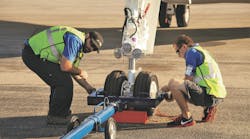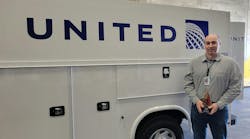ROLE MODEL
Long-term planning can be achieved through consensus
By Paul Bowers, Publisher
April 2000
No, not AIR-21. I'm referring to surface transportation and TEA-21. Despite the fact that Rep. Bud Shuster (R-PA) was a key architect of both measures, I suspect that upon closer examination you'll find more differences than similarities exist.
For starters, TEA-21 is approaching the mid-way point of a six-year run. His message to the delegates of the American Public Transportation Association (APTA) was not about our current authorization bill but working on the one that will replace TEA-21 — in three years! You could even work around the presidential bid of a key senator with that kind of lead time.
The fact of the matter is, the transit community has a process and dynamic that are light-years ahead of aviation. This is its second long-term spending bill and it delivers a Christmas wish list a mile long. Odds are that by the time TEA-21 expires, the industry, its trade association, the Federal Transit Association (FTA), and Congress will already have the fundamentals of a new program hammered out and moving even further into the future. They make our industry's in-fighting between sectors, their trade groups, and lack of working in advance with FAA look comical.
A perception that I have long held is that when dealing with FAA, Congress and the White House, the aviation industry, and thus the trade groups, work from a position of reaction, not proaction. Countless times we hear of an initiative, whether it be user-fees, fractional ownership, or PFCs that need an immediate, critical, life or death lobbying effort to get our federal friends to see our point of view, lest we parish. Conversely, the transit industry seems to have a relationship where problems are discussed prior to rule making or funding so that when it's time to pass legislation they speak as one, have tremendous support, and avoid the gaffes that arise when funding has run out. Partnering with FAA could improve.
APTA represents all sorts of members from subway, to bus, to big city to small. All forms of surface transportation are included. They efficiently accomplish with one trade group things that require several in aviation. Obviously we don't have that, nor may we ever. Granted there may be certain dynamics that prevent us from ever having one unified voice. But it is beautiful to watch when it comes time for FTA to speak to the industry they call APTA and get their perspective. If FAA wants to know what the aviation industry is thinking they need a convention center to seat all of our special interests, not to mention egos.
The solution as to how we can improve seems to be quite obvious. Getting there could prove tedious.





